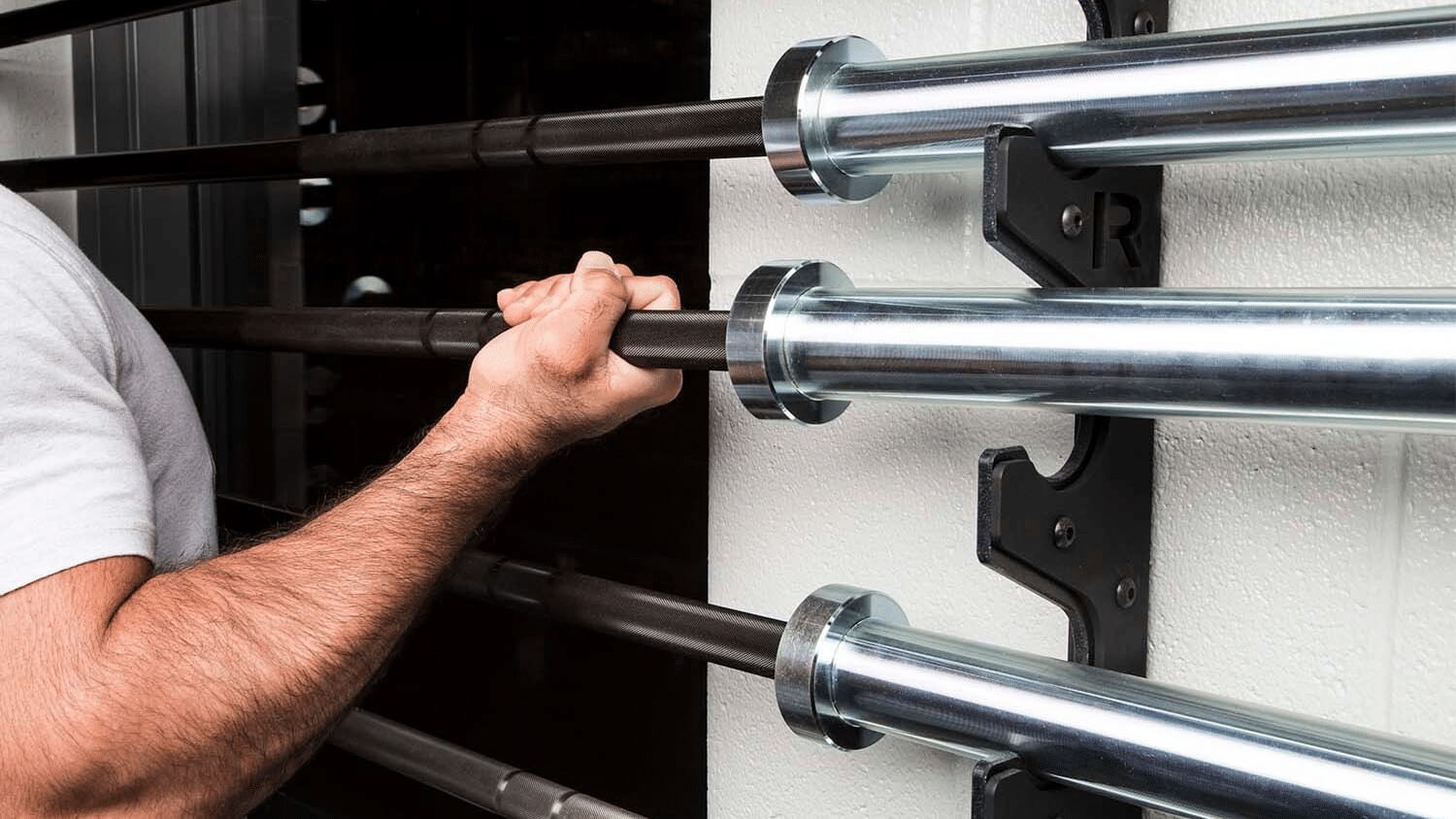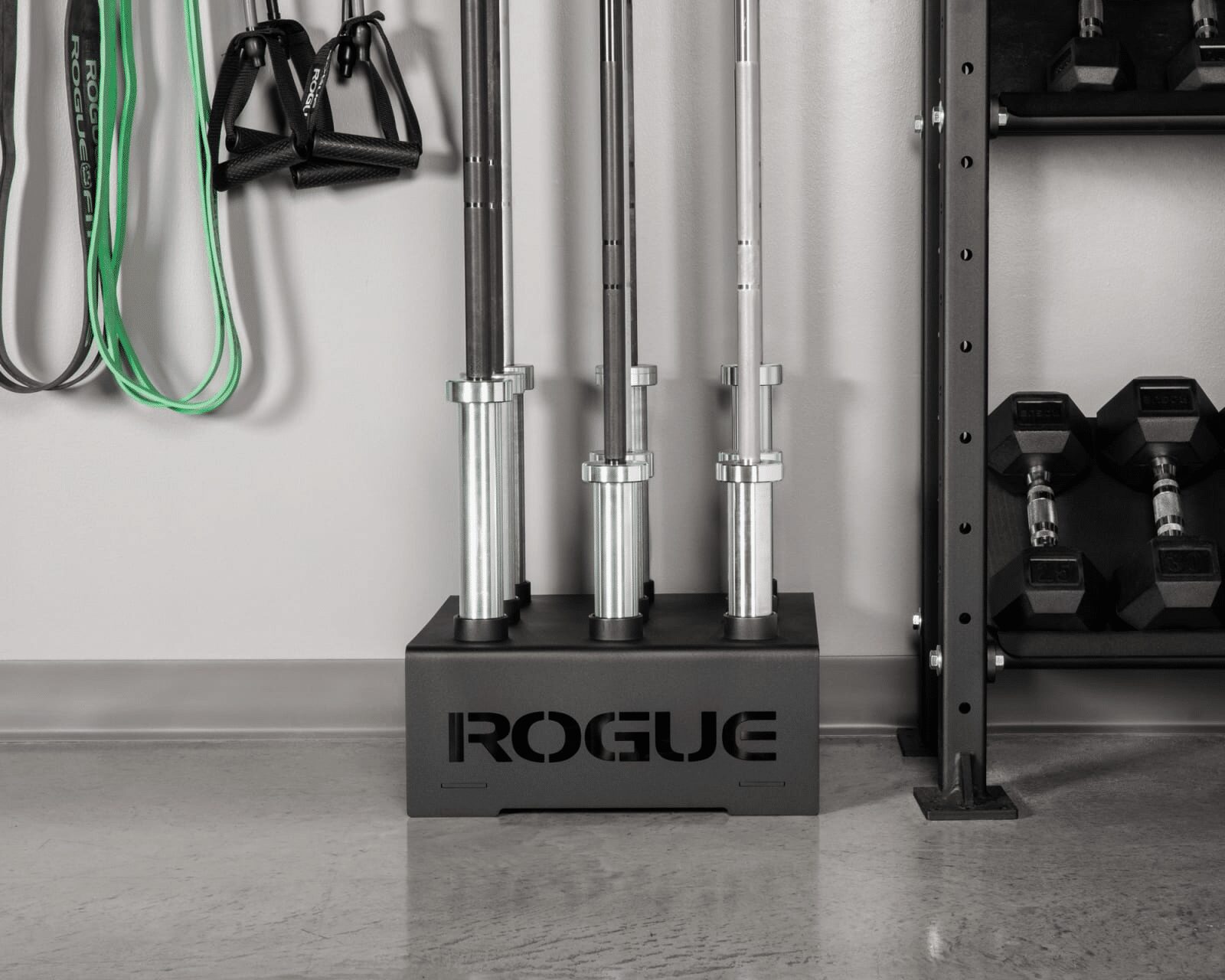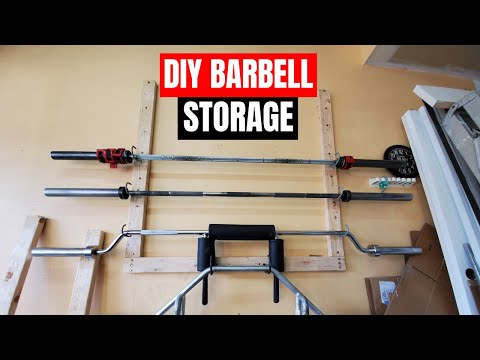Keeping your barbells in top shape is crucial for any serious lifter. Proper storage is key to extending their life and maintaining performance. This article covers essential tips on storing your barbells the right way. Whether you’re dealing with limited space or looking for the best methods to protect your equipment, I’ve got you covered.
Let’s get started!
Table Of Contents
Key Takeaways
| Key Takeaways | Details |
|---|---|
| Best Ways To Store Bars | Horizontal storage minimizes stress on barbell sleeves while vertical storage works well in tighter areas; rack and wall-mounted storage maximize space; freestanding racks suit larger spaces and lockable storage provides enhanced security for commercial gyms. |
| Worst Ways To Store Bars | Storing barbells outside, leaving weights loaded, placing them on the floor, or skipping cleaning leads to rust, damage, and poor function. |
| Importance Of Storage | Proper storage prolongs lifespan, maintains integrity, frees up space, enhances safety, prevents rust, and protects warranties. |
| Factors to Consider | Consider available space, number and types of barbells, material quality, and ease of assembly. |
Best Ways To Store A Barbell
There are two main ways to store your barbells: horizontally and vertically. Depending on your space and the barbells you own, one might suit you better than the other. I’ll break down the how and why of each.
Horizontal Bar Storage Is Best
Storing barbells horizontally is generally the way to go. Barbells are built to support weight horizontally not vertically so dropping them in could potentially cause issues as only one end of the bar is absorbing the shock. The overall spin can become uneven as well if you store the bar on one end every time.

Also, while gravity’s effect on the lubrication within the bar’s rotation system isn’t a huge concern, it’s something to consider. That said, many lifters store their bars vertically without issues, especially if the bars are high quality. It’s more about space and convenience; if you’re tight on room, vertical’s fine, but horizontal is preferred.
For a deeper dive into the mechanics of barbells, including their bushings and bearings, check out this insightful piece on bushing vs. bearing barbells.
Wall-Mounted
Wall-mounted barbell storage, commonly referred to as a gun rack, is the way to go for me. It clears the clutter, keeps bars off the floor, and maximizes gym space. Just make sure if you’re renting, you get the okay from your landlord. Mine’s cool with it, and honestly, wall mounts have been a solid choice for years. The key? Secure them to the wall studs to avoid any mishaps. It’s a straightforward solution that works wonders for keeping your training area tidy and your bars in top shape.
Rack-Mounted
Rack-mounted options are pretty solid, especially if wall mounting isn’t in the cards for you. If you’ve got just one barbell or a 6-post rack with multiple j-cups, storing your bar on the rack itself is simple and effective. Just remember, keep the bars unloaded to avoid unnecessary stress. For a more tailored setup, products like Darko lifting’s barbell anchors are top-notch. They’re specifically designed for this purpose, making them a great choice if you’re looking for something a bit more specialized.
Freestanding
Freestanding horizontal racks are common in many gyms, and they’re a solid choice if you’ve got the floor space. They can often be bolted down for extra stability, though many are sturdy enough on their own. If your home gym or garage has room to spare, this is a good option for sure. Otherwise, consider wall or rack-mounted solutions to save space.
Lockable Storage
Lockable gun racks are a smart move for commercial gyms to keep barbells secure and prevent theft. It’s a straightforward solution that offers peace of mind, ensuring that your equipment stays where it should.
Vertical Bar Storage Is Okay

Vertical barbell storage works well, especially in tighter spaces. It’s a practical option as long as you rotate which end of the bar faces down to evenly distribute any stress on the sleeves. Just watch out for cheaper vertical racks that might scratch your barbells. Opting for ones with protective linings, like UHMW plastic, inside the holes can keep your bar’s sleeves from getting damaged.
Wall-Mounted
Wall-mounted vertical storage is your space-saving hero. Just like its horizontal counterpart, it keeps your gym neat and opens up floor space. Remember, securing them to a stud is key to avoid any surprises.
Rack-Mounted
Rack-mounted vertical storage options is a great space saver. Brands like Rogue offer vertical bar holders that easily attach to your rack, letting you hang bars vertically. Make sure you choose options with a protective lining like UHMW plastic to prevent any damage to your bar from metal contact.
Freestanding
A freestanding barbell holder is perfect when mounting isn’t an option. They come in various sizes, holding anywhere from 5 to 10 bars, but a 9-bar holder is the most common. These are ideal for straight and some specialty bars. However, for larger bars like trap or safety squat bars, they might not be the best fit.
Lockable Rack
For vertical storage, lockable racks are especially useful in commercial settings where securing barbells against theft is crucial. These racks offer a practical way to protect your investment while keeping the gym organized.
Build Your Own (DIY)
DIY barbell storage is a great, budget-friendly option.
Here’s a video I made a couple of years ago with my original horizontal storage. You definitely don’t need to use the 2x4s though. Just get some bicycle hooks, find your studs, measure out the right height for each side so your bars are straight, drill pilot holes, screw them in, done.
Worst Ways To Store Barbells
Storing barbells the wrong way can seriously mess up their lifespan, performance, and even knock down their value. Let’s talk about what not to do when putting your barbells away.
Outside
Leaving your barbell outside is a big no-go. The weather can cause rust, corrosion, and even let pollen mess with the bar’s mechanics. Plus, you don’t want wildlife getting too close to your equipment.
With Weights Still Loaded On It
Keeping weights on your barbell long-term adds unnecessary stress, especially if it’s racked. Bars are designed for temporary loads, not constant pressure. Plus, clearing weights after you’re done is just common sense and good manners. Ignore this, and you’re not respecting the equipment or others around you.
For more on barbell care and usage, check out insights on when barbells bend and how to load a barbell properly.
On The Floor
Leaving your barbell on a cold, dusty floor is one of the worst storage mistakes. Not only can it lead to rust, especially if your space is prone to flooding, but it also becomes a prime spot for insects to camp out. The floor is the most humid part of the room and doesn’t do your bar any favors either. Whatever you do, don’t keep your barbell on the ground to avoid these issues.
Not Cleaning Your Barbell First
Skipping the cleaning and oiling of your barbell leads to rust and poor sleeve function. Chalk left on the bar pulls moisture from the air, worsening the problem. After using chalk, it’s crucial to clean the knurling with a wire brush to remove residue. Following up with 3-in-1 oil not only protects the barbell’s coating but also ensures the rotation system works smoothly.
Why It’s Important To Properly Store Your Barbells
Taking care of how you store your barbells isn’t just about keeping your space tidy; it’s crucial for the life and performance of your bars. Proper storage prevents damage, maintains their integrity, and ensures they’re always ready for your next workout. Let’s get into why it matters so much.
Prolong Bars Lifespan
Keeping your barbell in top condition is key to extending its life. Proper storage avoids scratches, dents, and rust, which is particularly crucial for preserving the knurling. Investing in a quality barbell means you’ll want it to last, and how you’re going to store it plays a significant role in that. For insights on choosing the right barbell, this buying guide can help you out.
Free Up Space
The right storage solution will free up the most space possible to allow room for garage gym essentials and typical garage storage.
Safety
Keeping barbells off the floor and away from corners isn’t just about tidiness; it’s a safety must, especially with kids, pets, or anyone prone to accidents around. Ensuring barbells are properly stored minimizes risks of injuries from tripping or falling weights. It’s a smart move for a safer gym environment. For more on keeping your workout space safe, have a look at this guide on barbell safety.
Help Prevent Rust Buildup
Proper storage is a no-brainer for preventing rust on your barbell. A bit of rust might not be the end of the world, but let it get out of hand, and you’re looking at some serious safety risks. Keeping your bar dry and off damp surfaces goes a long way.
Protect Warranty
Most warranties on barbells only cover things like bending or structural defects caused by regular use. Negligent or faulty use such as dropping the bar without bumper plates on them, neglecting maintenance, and improper storage will void the warranty. So when an actual issue occurs and you want a replacement, you’re shit out of luck.
Factors to Consider When Choosing Storage Solution
When choosing a barbell storage rack, there are several factors to consider.
- Available Space – Measure your space before purchasing a rack to ensure it will fit. Consider both the floor and wall space (if you’re considering a wall-mounted rack).
- Number Of Barbells – Make sure the rack can accommodate the number of barbells you need to store. If you plan to expand your collection in the future, consider getting a larger rack.
- Type Of Barbells – Different types of barbells may require different storage solutions. For instance, if you have bigger specialty bars like a trap bar, they might not fit well.
- Material & Build Quality – The rack should be sturdy and durable enough to hold your barbells securely. Look for a rack made of high-quality materials that can withstand the weight of your barbells.
- Ease Of Assembly – Some barbell racks may require assembly. Check if the rack comes with clear assembly instructions and all the necessary hardware.
Conclusion
Hopefully this guide helped you find the best storage option for your home gym.
If you need more help figuring out what you need, let me know in the comment section below!
Until next time,
-Dante
